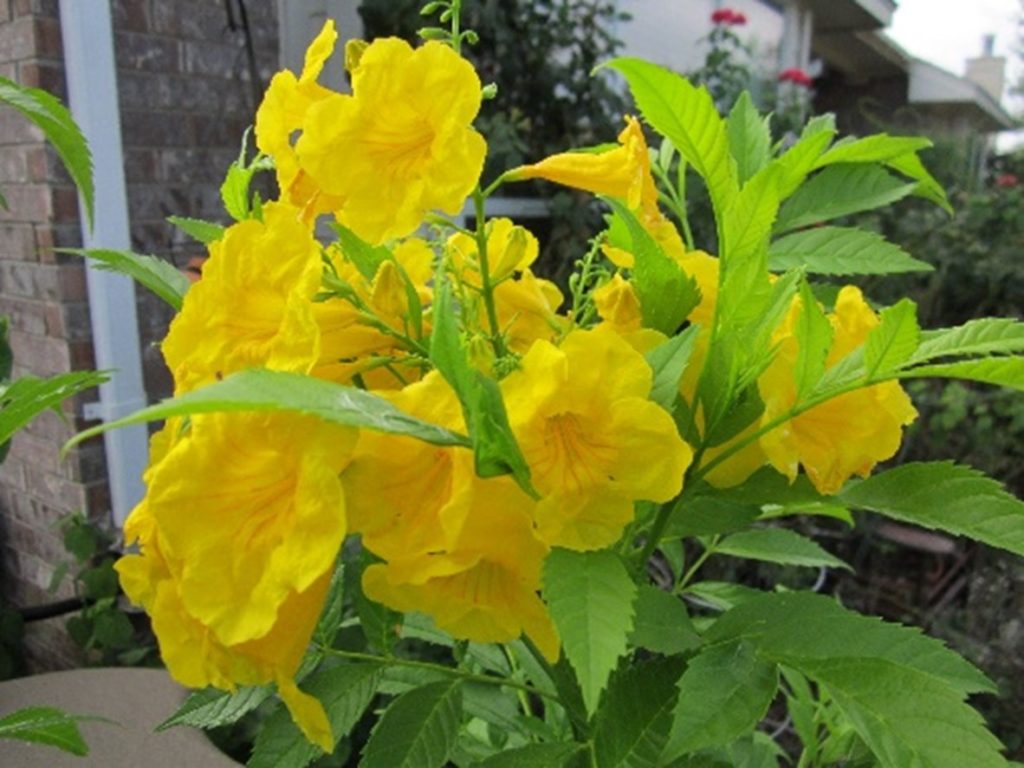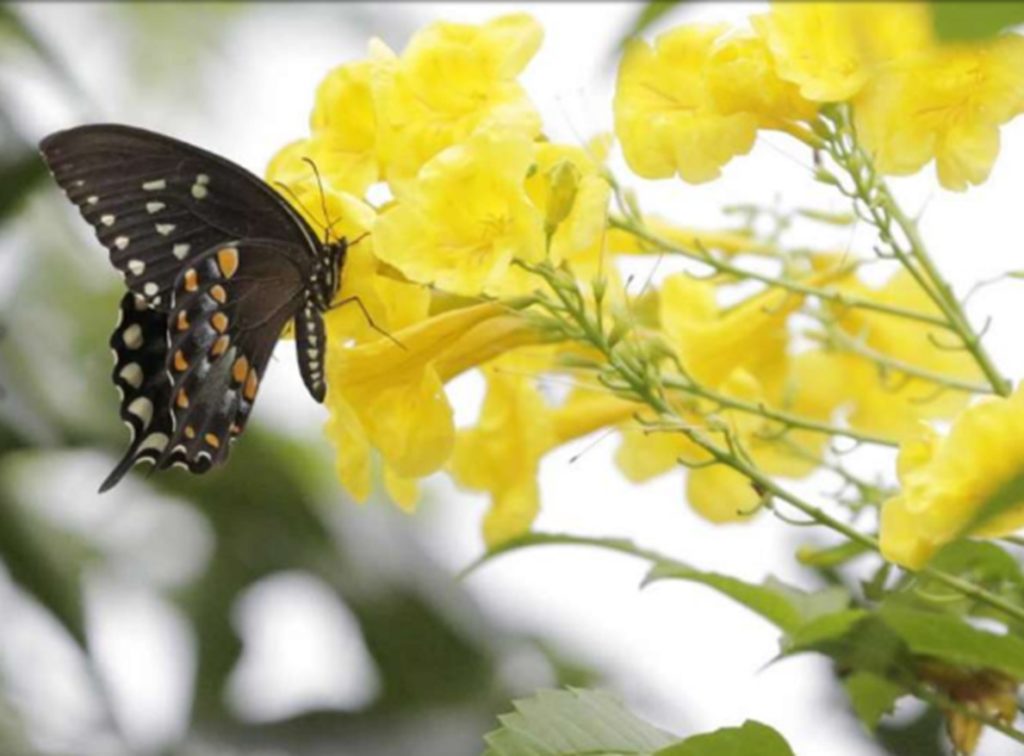Esperanza
Tecoma stans


Characteristics
- Type: Shrub
- Zone: 8 – 11
- Height: 3 – 6 Feet
- Spread: 3 – 4 Feet
- Bloom Time: Spring
- Bloom Description: Yellow
- Sun: Full Sun
- Water: Medium
- Maintenance: Low
- Suggested Use: Annual
- Flower: Showy, Fragrant
- Leaf: Evergreen
- Attracts: Butterflies
- Texas Superstar® Plant
Culture
As a Texas Superstar® Plant, Esperanza has recently become a very popular ornamental plant in Texas gardens. In the wild it will be found growing on rocky slopes near San Antonio and in the Trans-Pecos, north into New Mexico and Arizona, east to Florida and south into Central and South America in well-drained soil and full sun. The Trans-Pecos plants are considered to be the most cold hardy, but they are still only really hardy to zone 8b. North of there, it should be used as an annual or as a fast growing, large container plant which may be moved into warmer winter quarters. The striking, tubular 2 1/2-inch bright yellow flowers are highlighted by the attractive, shiny, green foliage and continue through the heat of the summer. The flowers have an odd but pleasing fragrance and also provide nectar for bees. The Indians made bows from its wood, and in Mexico a beer was prepared from its roots; it has also been used for a variety of medicines.
Noteworthy Characteristics
Tecoma stans, commonly called yellow bells, is a broadleaf evergreen shrub features bright yellow tubular flowers. It also features odd pinnate medium green leaves with ovate-oblong toothed leaflets (2-4” long). Trumpet-shaped bright yellow flowers (to 2” long) in axillary and terminal racemes that are slightly fragrant. Flowers are followed by narrow bean-like capsules (to 6” long) that are filled with papery-winged seeds. Common names for Tecoma stans plants include trumpet bush, esperanza (Spanish for hope), yellow elder, yellow bells or yellow bignonia.
Problems
No serious insect or disease problems. Watch for spider mites and whiteflies on indoor plants.
Garden Uses
Specimen plant, massed in gardens and shrub borders, or grown in containers.